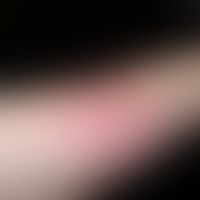
Acrodermatitis chronica atrophicans L90.4
acrodermatitis chronica atrophicans: blurred, livid red, (scaleless) symptomless spots. right upper grandson/hip region. skin somewhat speckily shiny.

Artifacts L98.1

Solar dermatitis L55.-
Dermatitis solaris: Large, very painful erythema with beginning blister formation on the back of the foot. 30-year-old patient after several hours of sunbathing in the midday sun.

Harlequin discoloration P83.8
Harlequin discoloration: Characteristically, there are strictly hemiplegic flat erythema with sharp midline demarcation on the trunk, face and genital region, and harlequin color change can occur in both healthy and otherwise diseased newborns.4
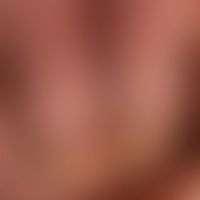
Splinter hemorrhages
Splinter bleeding: in generalized psoriasis with large oil stains and thickening of the nail plates.
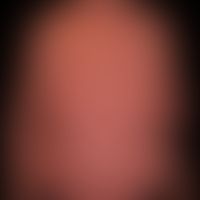
Vemurafenib
Side effects of vemurafenib: Erythroderma with pronounced keratosis areolae mammae (acquisita) under vemurafenib therapy.

Erythema perstans faciei L53.83
Erythema perstans faciei. persistent, butterfly-shaped, livid red erythema in a 3-year-old boy with vitium cordis (pulmonary stenosis, subaortic stenosis, vascular transport and ventricular septal defect).
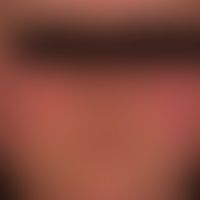
Rosacea L71.1; L71.8; L71.9;
rosacea. rosacea erythematosa, stage I of rosacea with individual inflammatory papules and pustules. flat, relatively sharply defined, symmetrical erythema (plaque) of the cheeks with clear protrusion of the follicles (skin pores). no comedones. perioral area remaining free. redness is now permanently present after earlier volatility but with varying intensity. at the same time, a feeling of tension and a slight burning sensation with shearing activity.

Rosacea L71.1; L71.8; L71.9;
Stage I-IIrosacea (rosacea papulopustulosa) In this 34-year-old female patient, single, recurrent red papules and pustules have been present on the nose, cheeks and chin for about 4 years.

Amyloidosis systemic (overview) E85.9
Amyloidosis systemic of the Al type: in relapses, more prominent after physical exertion, completely asymptomatic, permanently persistent purpura on both lower legs in a 65-year-old. Known plasmocytoma.

Klippel-trénaunay syndrome Q87.2
Klippel-Trénaunay syndrome: extensive vascular malformation with extensive nevus flammeus affecting the trunk and both arms. no evidence of soft tissue hypertrophy so far. no AV fistulas. here detailed picture of the back of the right hand

Purpura senilis D69.2
Purpura senilis: bizarrely configured, fresh bleeding at the forearm extensor sides in elderly patients

Vasculitis leukocytoclastic (non-iga-associated) D69.0; M31.0

Airborne contact dermatitis L23.8
Airborne Contact Dermatitis: Chronic, massively itching and burning, lichenified dermatitis, which is limited to the freely carried skin areas. Lower boundary only blurred (leaking eczema foci), a typical feature of contact allergic eczema. Retroauricular region is also affected.
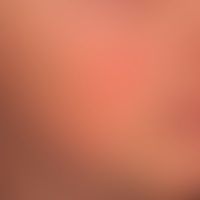
Erythema perstans faciei L53.83
Erythema perstans faciei: symmetrical, changing redness of both cheeks (here circled) Fixed erythema on chin and cheeks marked with arrows.

Scleroderma systemic M34.0
Scleroderma, systemic: within 2-3 years, newly developed telangiectasia of the facial skin.
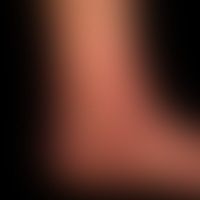
Unilateral naevoid telangiectasia syndrome I78.8
Teleangiectasia syndrome naevoides: A blurred redness of finest telangiectasia on the lower leg and foot of a 44-year-old woman that has existed for many years; the white part shows a naevus anaemicus (a frequent syndromal coupling).







